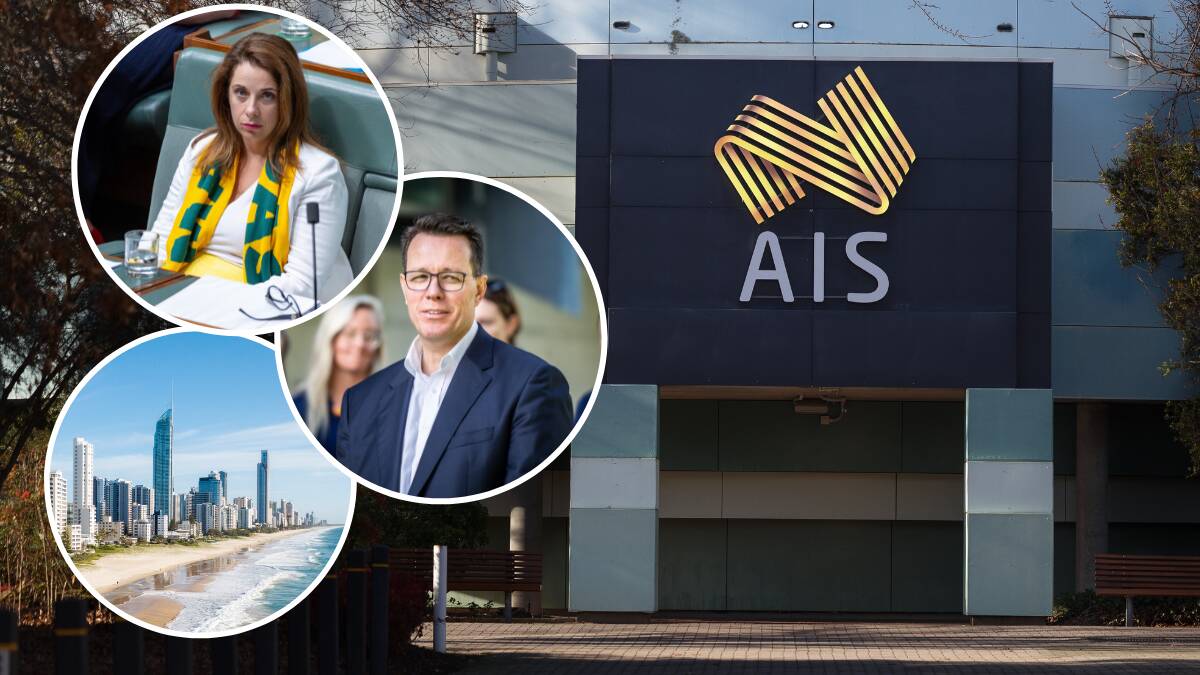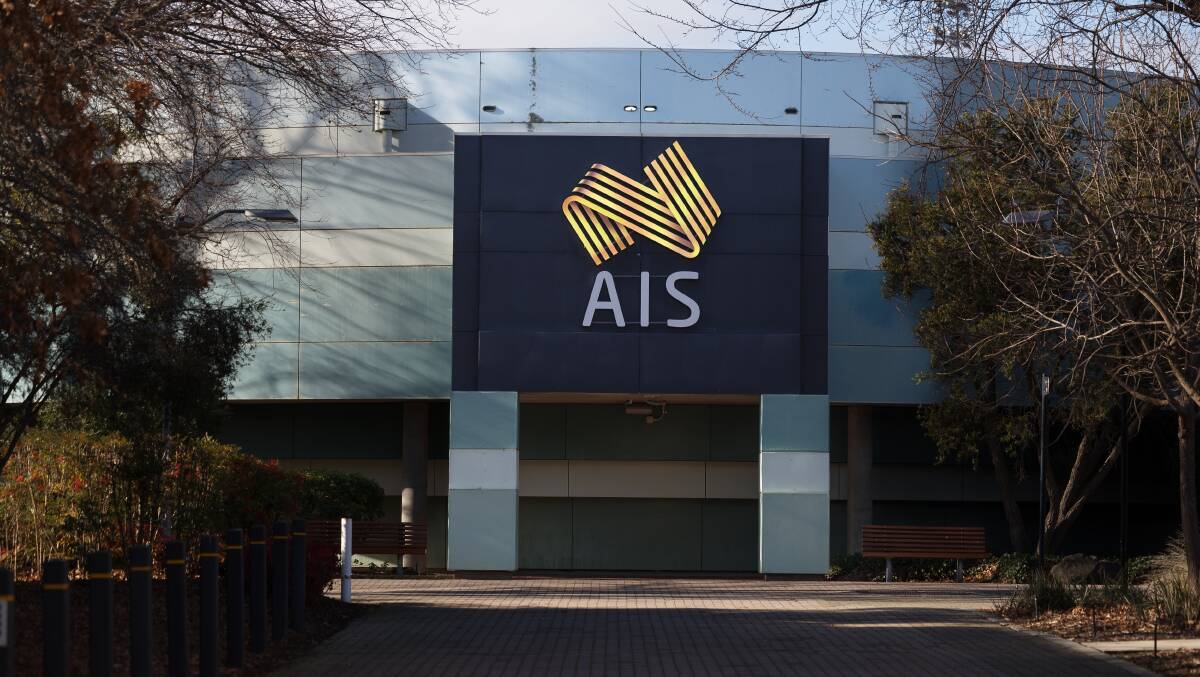The Australian Sports Commission rejected a plan to move the AIS to south-east Queensland, warning federal government officials it would cost more than $1 billion and put athlete dreams at risk ahead of the 2028 and 2032 Olympic Games.
Subscribe now for unlimited access.
or signup to continue reading
New documents released under freedom-of-information laws reveal the commission considered three proposals as part of an AIS masterplan and presented the options to the federal Minister for Sport Anika Wells last year.
The future of the AIS, founded in 1981 as the "national home of sport", is understood to be a live issue for the Albanese Labor government.
The three options included a complete relocation to south-east Queensland, flagged to cost a minimum of $600 million, exclusive of land costs; decentralisation of the AIS to other states and territories, and; spending $200 million to upgrade existing facilities to keep the AIS in Canberra.
Australian Sports Commission chief executive Kieren Perkins has continually rejected attempts to move the AIS away from Canberra and is pushing for greater investment at the existing site after unveiling plans this week to build a $4 million altitude house.
But Queensland officials have been driving discussions about moving the AIS for several years, garnering support from former Australian Olympic Committee boss John Coates and former sports commission chairman John Wylie.

They argued the AIS was in an undesirable location in Bruce and had become too old and tired to have any meaningful impact on athletes chasing international success. During 2023, around 5000 athletes and staff from 31 sports will use the AIS campus.
It has led to several revamp options being considered, including cutting the AIS land footprint in half and selling more than 30 hectares of land to help fund redevelopments and sport science.
But excerpts of the latest masterplan show sports commission officials rejected the idea to move the institute and their preference was to stay in the capital with funding to upgrade the existing site.
The FOI documents reveal, in a July 1, 2022, briefing to office of the Ms Wells for the "minister's reference", that the AIS considered the business case of "various locations" to relocate the function of the AIS to south-east Queensland ahead of the 2032 games. Such a move would need federal cabinet sign-off.
READ MORE:
Decentralisation of the AIS functions, involving replication of AIS facilities either through the various states and territories or in south-east Queensland, was also considered, as was remaining in Canberra although the AIS insists significant upgrades are still needed for ageing infrastructure in Bruce to ensure it can have a significant impact on Australia's "golden decade".
A sports commission spokesperson said decisions regarding the future of the site are a matter for the government.
"The Australian Sports Commission is working with the government to consider the facilities required to support Australia's high performance athletes maintain their international competitiveness and be ready for Brisbane 2032," the spokesperson said in a statement.

The Minister for Sport and the Minister for Infrastructure Catherine King declined to comment on the contents of the documents.
The until now confidential AIS masterplan, which had been in the works for several years, shows the cost of moving the AIS assessed at a minimum of $600 million, exclusive of land costs.
The redacted document also shows, in a section titled "Why Canberra?", that such a relocation would impact athletes and their hopes of success.
"To move the AIS would also take at minimum an additional [four] years when factoring in site selection, planning, construction, and relocation," the document said.
"Significantly high execution risk would accrue to a relocation which may impact athlete preparation for the 2026 Commonwealth Games as well as the 2028 and 2032 Olympics and Paralympics."
READ MORE:
The AIS ultimately picked the option to stay in Canberra, despite ageing facilities, as a relocation would have a "significantly high execution risk" which may impact athlete preparation for the 2026 Commonwealth Games as well as the 2028 and 2032 Olympics and Paralympics.
"The options included development of a new campus in other locations (such as south-east Queensland), investment in new facilities at the existing campus, as well as the sale and lease back of the existing campus," the document states.
"Ultimately, the only option assessed as viable was revitalisation of the existing campus."
The documents show the office of the Minister for Sport requesting a copy of the AIS masterplan documents via email on June 29, 2022, not long after federal Labor's election win, for the "Minister's reference."
On July 1, 2022, the AIS chief operating officer Luke McCann replied with a final version of the masterplan.
There was also further correspondence indicating a site briefing on July 22, 2022.
With the relocation and decentralising options, "explored and ultimately dismissed," cost was a significant factor.
"These options were estimated to cost in excess of $1 billion in initial capital investment and involved the development of new facilities as well as utilisation of some existing facilities," the document said.
"These options did not support the AIS in achieving its objectives, included significant development risks (time, cost, planning, co-ordination, recognition of ownership and therefore responsibility for ongoing maintenance, depreciation and other factors between the commonwealth and QLD government).
"There were also issues with some sites with existing facilities including topography for para access that had significant challenges."
Timing was also cited as a factor for the four-yearly Olympics and Paralympics Games, particularly the home games in nine years.
"Notwithstanding the challenges, risks and cost implications, any relocation could not be delivered in a time frame to support the athlete development cycles required for peak performance in 2032 and therefore Australia's ambitions for the 2032 Olympics and Paralympics in Brisbane would be significantly impacted," the document states.

Olympic swimming legend Perkins, who is also the boss of the AIS, has rejected the idea of selling land and has continually reiterated his commitment to keeping the campus in Canberra.
The future of Canberra Stadium and the AIS Arena have been the source of uncertainty for Canberrans. Both assets are owned by the sports commission, which no longer deems them part of "core business".
But the federal government has pledged $10 million to reopen the AIS Arena next year after it was closed because of safety concerns in 2020, while the commission has signed a memorandum of understanding to work with the ACT government to redevelop Canberra Stadium and the surrounding precinct.
ACT Chief Minister Andrew Barr has commissioned a feasibility study for stadium upgrades at Bruce after dismissing his own idea of building a new venue in Civic.
The sports commission hopes the deal will also lead to better on-site accommodation for athletes as well as improved retail and hospitality amenities around the precinct.
Ahead of the 2024 Paris Olympics and Paralympics, the ASC is also managing and operating a European Training Centre (ETC).
We've made it a whole lot easier for you to have your say. Our new comment platform requires only one log-in to access articles and to join the discussion on The Canberra Times website. Find out how to register so you can enjoy civil, friendly and engaging discussions. See our moderation policy here.
Our journalists work hard to provide local, up-to-date news to the community. This is how you can continue to access our trusted content:
- Bookmark canberratimes.com.au
- Download our app
- Make sure you are signed up for our breaking and regular headlines newsletters
- Follow us on Twitter
- Follow us on Instagram



